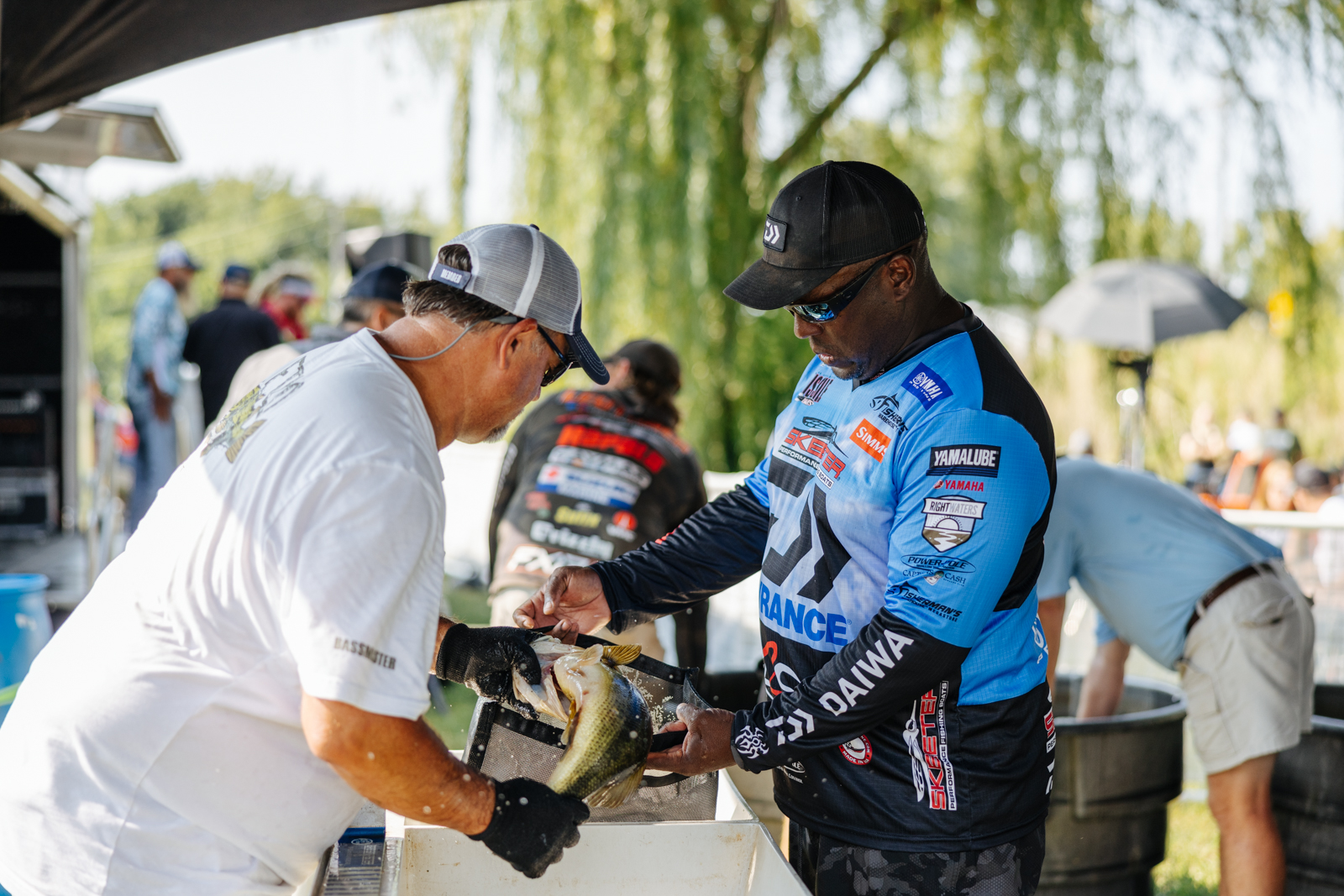
La Crosse, Wis. — Nothing ever stays the same on a fluctuating river system, and how to adjust to those changing conditions is the key to tournament success.
That sums up the backstory of Day 1 at the St. Croix Bassmaster Open at Mississippi River presented by SEVIIN. For most of 2024, the river stage remained high, until recently, and specifically when the tournament began this week. At least in the pools open to fishing (7, 8, 9), the water has dropped several or more inches in recent days.
That can be good and bad, depending on the time of year and the type of fishery in play. On this section of the Mississippi River, a falling river stage is coinciding with the approaching fall transition of largemouth and smallmouth moving from backwater areas into the main river. Therefore, the fall transition might artificially be underway, less the consistent cooler weather and shorter days that naturally trigger the movement.
Case in point are scenarios describe by some of the top anglers after Day 1.
Beaudrie’s Kentucky Lake knowledge pays off
Chris Beaudrie weighed 19 pounds in his first tournament on the Mississippi River, doing so by applying basic knowledge of seasonal bass behavior from his home water of Kentucky Lake.
“The basics are the same regardless of where you are fishing,” said Beaudrie. “Where I’m from it’s a textbook example of what occurs during a winter drawdown, although that’s not what we have here.”
What we do have is how the bass are following the same behavior. In Beaudrie’s case, they are staging on key areas along a seasonal transition route from shallow to deep water.
Beaudrie listed his key strike zones as grass edges where the migrating bass stage to feed and rest along what he described as a “superhighway” of actively feeding fish.
Beaudrie recognized his lack of navigational knowledge of the backwater areas, where unmarked hazards can mean trouble. Instead, he built his pattern around areas easily navigated for quick entry and exit.
Monroe’s history lesson
Ish Monroe won a Bassmaster Elite event on this river during the summer of 2018, doing what he does best. That was using one lure—specifically a River2Sea Phat Mat Daddy frog—to catch 65 pounds, 7 ounces over four days.
Monroe is quite literally reversing his winning pattern at this week’s tournament. In 2018, Monroe took note of largemouth moving shallower each day on rising water into his backwater area. As the tournament went on, and the river levels continued to rise, the fish moved further back into the shallow backwaters that were covered in grass, lily pads, duckweed and other types of aquatic vegetation. Monroe continued refining his pattern, noting which types of vegetation held the greatest concentrations of bass. Duckweed was the winning formula.
With the water flowing in the opposite direction this week, Monroe is simply targeting key areas of duckweed forming edges along migration routes nearer the main river.
“I’m doing the damage where the duckweed forms subtle points over the migration routes,” he said. “It’s just simply tracking the fish back out in reverse of the same routes they use for the spring to summer, and then fall migrations.”
Local knowledge pays off for Laufenburg
Cade Laufenberg, of Onalaska, Wis., leveraged local knowledge and textbook fall transition skills to weigh 18-1 after Day 1.
Laufenberg recognized the falling water conditions are influencing his pattern of intercepting bass also beginning their fall migration.
“Shorter days, more than the shift from hot to somewhat cooler weather has started the migration,” said Laufenberg, who competed collegiately for Winona State University. “The bass are now feeding on shad, and when they do that, it’s definitely the start of the transition.”
That said, Laufenberg is pinpointing specific areas where the bass will eventually spend their winter in the main channel, then tracing a route back to where they are coming from during summertime. Targeting bass along their transition areas is the key to his success.
“It’s really textbook areas where current, sand, rock and wood are mixed in with the vegetation,” he said.






